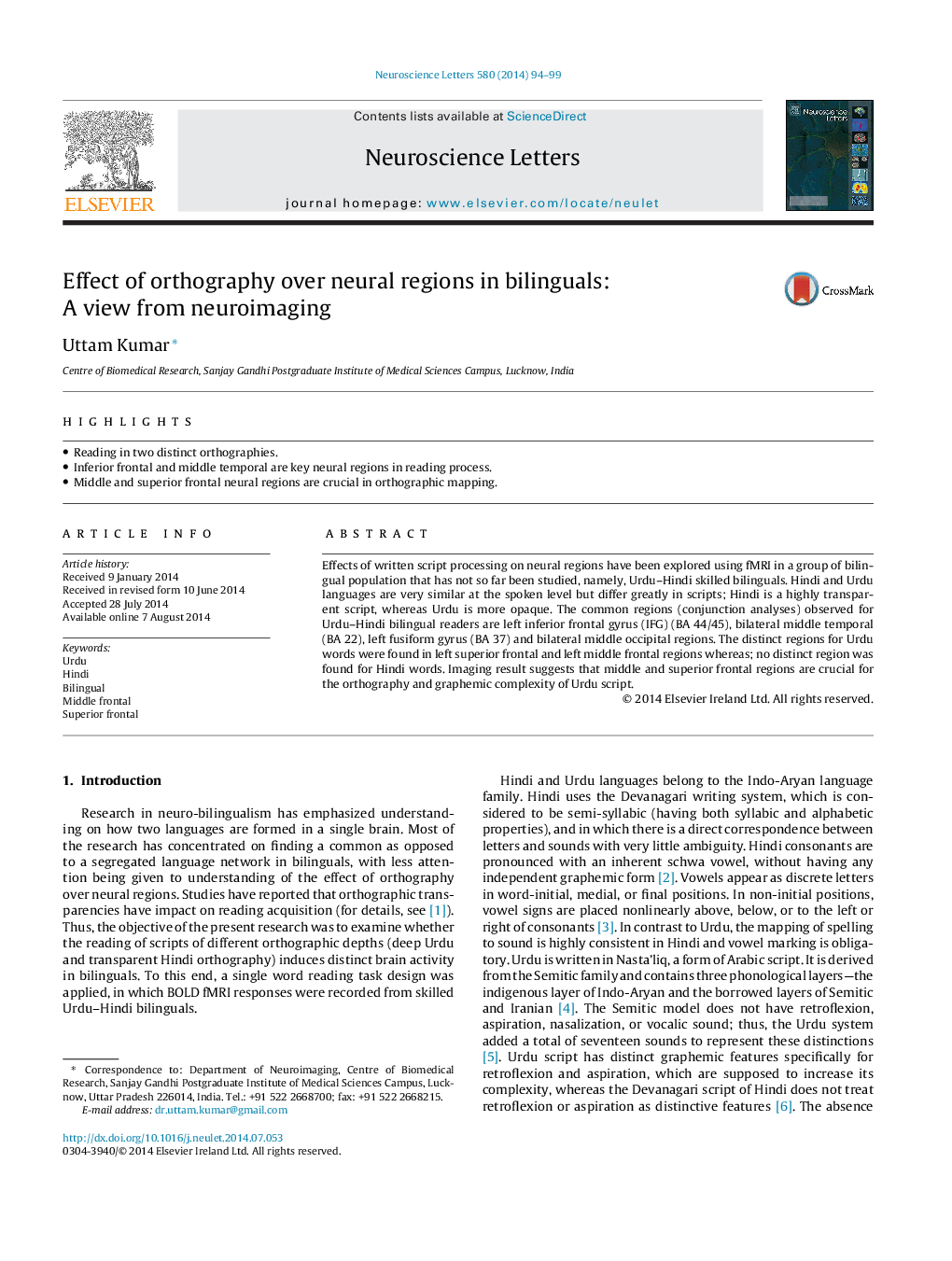| Article ID | Journal | Published Year | Pages | File Type |
|---|---|---|---|---|
| 4343621 | Neuroscience Letters | 2014 | 6 Pages |
•Reading in two distinct orthographies.•Inferior frontal and middle temporal are key neural regions in reading process.•Middle and superior frontal neural regions are crucial in orthographic mapping.
Effects of written script processing on neural regions have been explored using fMRI in a group of bilingual population that has not so far been studied, namely, Urdu–Hindi skilled bilinguals. Hindi and Urdu languages are very similar at the spoken level but differ greatly in scripts; Hindi is a highly transparent script, whereas Urdu is more opaque. The common regions (conjunction analyses) observed for Urdu–Hindi bilingual readers are left inferior frontal gyrus (IFG) (BA 44/45), bilateral middle temporal (BA 22), left fusiform gyrus (BA 37) and bilateral middle occipital regions. The distinct regions for Urdu words were found in left superior frontal and left middle frontal regions whereas; no distinct region was found for Hindi words. Imaging result suggests that middle and superior frontal regions are crucial for the orthography and graphemic complexity of Urdu script.
